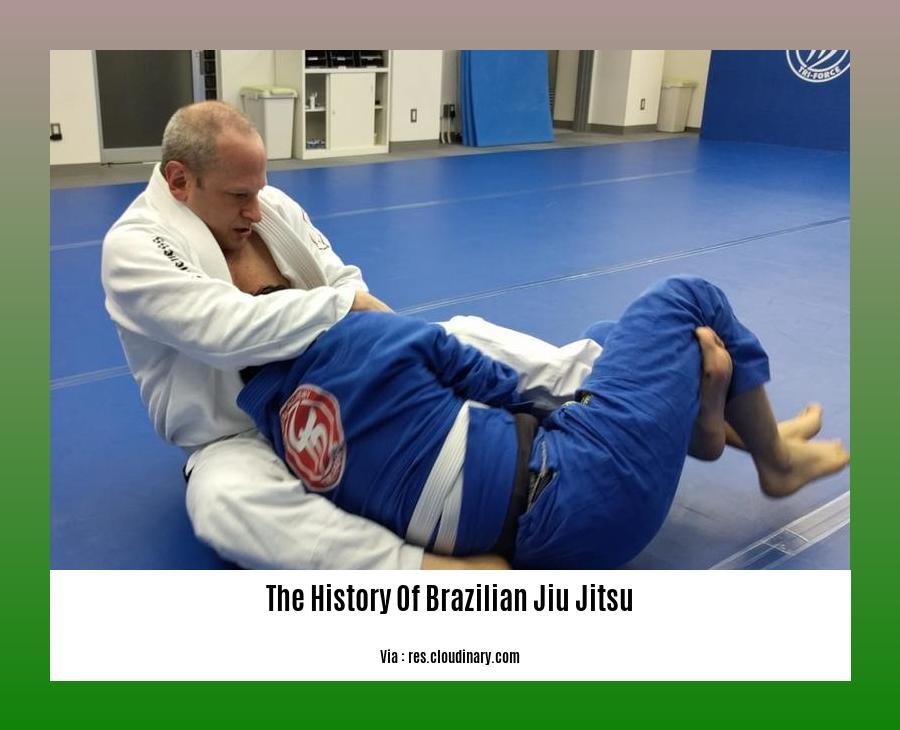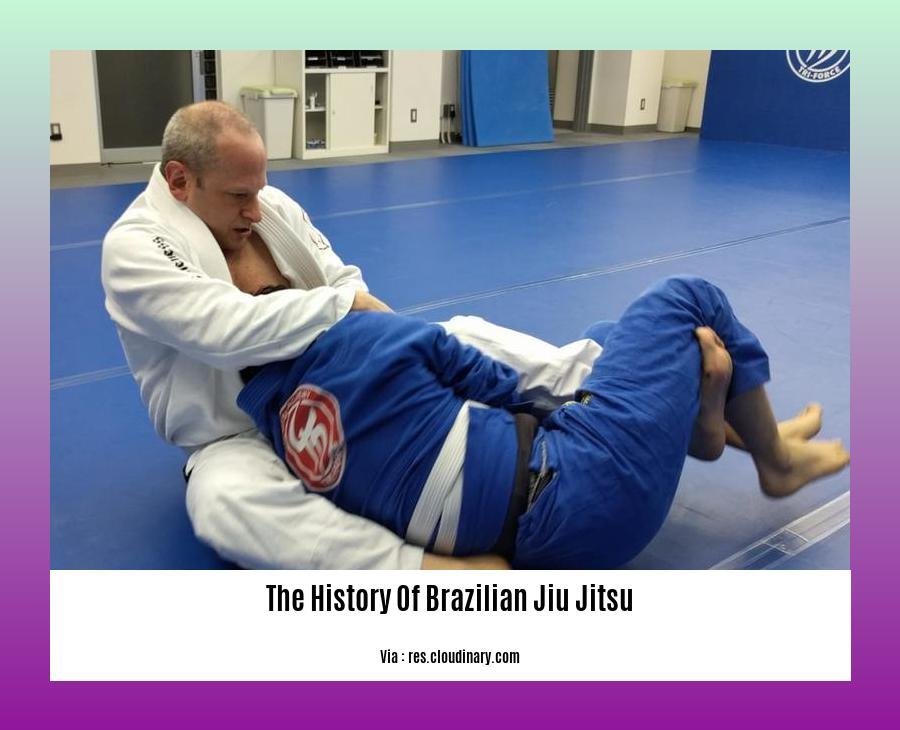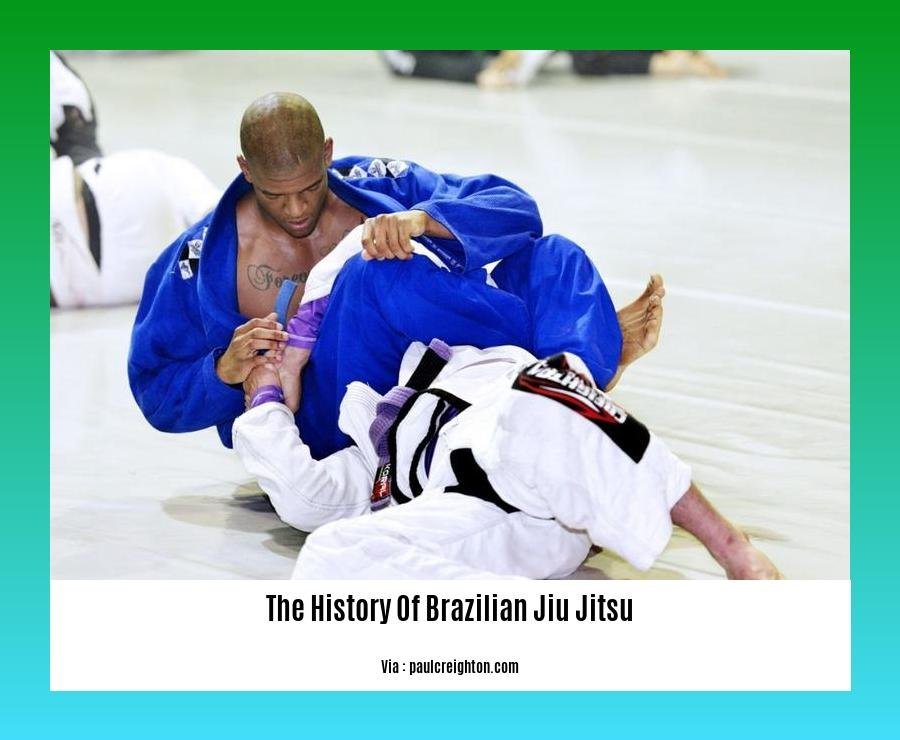Get ready for a captivating journey through time as we explore the rich history of Brazilian Jiu-Jitsu (BJJ)! This comprehensive guide will take you on an in-depth exploration of the origins, evolution, and global impact of this dynamic martial art. From its roots in ancient Japanese fighting techniques to its modern-day status as a globally renowned combat sport, discover the fascinating narrative of BJJ. Join us as we uncover the stories of legendary figures, groundbreaking techniques, and the cultural influences that have shaped this martial art into what it is today. So, sit back, relax, and prepare to immerse yourself in [A Journey Through Time: The History of Brazilian Jiu Jitsu].
Key Takeaways:
- In 1925, the Gracie family created Brazilian Jiu-Jitsu (BJJ) in Brazil.
- Its origins can be traced back to traditional Judo and Japanese Jiu-Jitsu, which emerged in the 1500s.
- BJJ was conceived to empower smaller and weaker individuals in defending themselves against larger opponents.
- The Gracie family referred to their self-defense system as “Gracie Jiu-Jitsu.”
- BJJ maintains its popularity today as a martial art and form of self-defense practiced worldwide.
The History of Brazilian Jiu Jitsu


From its humble beginnings in early 20th-century Brazil to its current status as a globally renowned martial art and combat sport, Brazilian Jiu-Jitsu (BJJ) has come a long way. Let’s delve into the rich history of this captivating martial art.
The Gracie Legacy: Pioneering BJJ
The Gracie family, led by Carlos Gracie, played a pivotal role in the development and dissemination of BJJ. Gracie, who learned traditional Japanese Jiu-Jitsu from Mitsuyo Maeda, modified and adapted the art to suit the needs of smaller and weaker individuals.
The Gracie family’s contributions to BJJ are immense. They developed a unique teaching system, emphasizing ground fighting and submission techniques, which revolutionized the world of martial arts.
The Spread of BJJ: From Brazil to the World
BJJ’s effectiveness as a self-defense system and its popularity in competitive grappling led to its rapid spread beyond Brazil’s borders. In the 1970s and 1980s, Gracie family members traveled worldwide, teaching BJJ and competing in various martial arts tournaments.
The success of Gracie fighters in these competitions, particularly in the early Ultimate Fighting Championships (UFC) events, brought BJJ into the international spotlight. Since then, BJJ has gained widespread recognition and is now practiced in numerous countries worldwide, with countless schools and academies teaching this martial art.
The Evolution of BJJ: Techniques, Strategies, and Competitions
Over the years, BJJ has undergone significant technical and strategic developments. New techniques and variations have emerged, and the sport’s competitive aspect has grown exponentially.
BJJ competitions, such as the World Jiu-Jitsu Championship and the Pan American Championship, have become prestigious events, attracting top-level athletes from around the globe. These competitions have fueled the growth of BJJ and showcased the incredible skill and dedication of its practitioners.
Today, BJJ stands as a complete and comprehensive martial art, offering a vast array of techniques, strategies, and applications for self-defense, competition, and personal development.
If you’re interested in learning more about martial arts and combat sports, check out our other blog posts:
- The History of Karate: From Okinawa to the World
- Muay Thai: The Art of Eight Limbs
- The Rise of Mixed Martial Arts: A Dynamic Fusion of Fighting Styles
Would you like to take a trip down memory lane? Head over to our article on the history of Nigeria from 1914 to date and 1960 to date to witness its intriguing journey through time! Or, perhaps you’d like to explore a different era altogether? Visit our page on the Indian timeline from 1600 to 1947 to delve into the annals of Indian history or discover the timeline of modern Indian history to gain insights into a nation’s transformation.
**A Brief History of Brazilian Jiu Jitsu**
Brazilian Jiu-Jitsu (BJJ), a martial art and combat sport, has a rich history that has shaped its techniques, philosophy, and global impact. Let’s delve into the fascinating journey of BJJ through time:
Roots in Kodokan Judo
BJJ traces its lineage back to Japanese Kodokan Judo, founded by Jigoro Kano in 1882. Kano’s system emphasized grappling and leverage over brute strength, making it an ideal martial art for smaller individuals.
Mitsuyo Maeda’s Arrival in Brazil
In 1914, Mitsuyo Maeda, a top Judo expert from Kano’s Kodokan, embarked on a global mission to promote Judo. His travels brought him to Brazil, where he taught Carlos Gracie, a young Brazilian who was captivated by the art’s self-defense principles.
The Gracie Family’s Refinement
Carlos Gracie, along with his brother Helio Gracie, refined Maeda’s Judo techniques, emphasizing ground fighting and developing a system that would become known as Brazilian Jiu-Jitsu. Helio Gracie, in particular, is credited with shaping BJJ into the grappling-focused martial art we know today.
The Kimura-Gracie Match
In 1951, a legendary match between Helio Gracie and Japanese Judoka Masahiko Kimura took place. Kimura’s victory, achieved with a shoulder lock that would later bear his name, brought international attention to BJJ and its effectiveness in grappling.
BJJ’s Rise in Popularity
In the 1970s, BJJ began to gain popularity in the United States, thanks in part to the Gracie family’s promotional efforts and the success of BJJ practitioners in mixed martial arts (MMA) competitions.
BJJ Today
Today, BJJ is practiced worldwide as a martial art, self-defense system, and competitive sport. It has gained recognition for its effectiveness in grappling and its ability to empower individuals of all sizes and strengths.
Key Takeaways:
- BJJ originated from Kodokan Judo, founded by Jigoro Kano in Japan.
- Mitsuyo Maeda, a Judo expert, introduced BJJ to Brazil in 1914 by teaching Carlos Gracie.
- The Gracie family, particularly Helio Gracie, refined BJJ, emphasizing ground fighting techniques.
- The Kimura-Gracie match in 1951 brought international recognition to BJJ.
- BJJ gained popularity in the US in the 1970s and is now practiced worldwide.
Citations:
FAQ
Q1: Where did Brazilian Jiu-Jitsu originate from?
A1: Brazilian Jiu-Jitsu (BJJ) originated from traditional Judo and Japanese Jiu-Jitsu, which traces its roots back to the 1500s. It was developed in Brazil by the Gracie family in 1925.
Q2: Who developed Brazilian Jiu-Jitsu?
A2: Carlos Gracie, a student of Mitsuyo Maeda, a top Judo expert from Jigoro Kano’s Kodokan, developed Brazilian Jiu-Jitsu in Brazil. He was inspired by his father, Gastão Gracie, who had also learned Judo from Maeda.
Q3: What was the main purpose of BJJ when it was developed?
A3: BJJ was initially developed as a self-defense system to help smaller and weaker individuals defend themselves against larger opponents. It emphasized ground fighting and grappling techniques.
Q4: When and how did BJJ gain popularity worldwide?
A4: After Helio Gracie defeated Masahiko Kimura in a famous Jiu-Jitsu competition in 1951, the Kimura lock became widely recognized, promoting BJJ’s reputation. In the 1970s, BJJ began to be taught in the United States and gained further popularity in mixed martial arts competitions.
Q5: What is the current status of Brazilian Jiu-Jitsu?
A5: Today, Brazilian Jiu-Jitsu is a well-respected martial art and self-defense system practiced worldwide. It is used in law enforcement and mixed martial arts competitions and is recognized for its effectiveness in grappling and ground fighting.
- Unveiling the Enigma: Mansoureh Khojasteh Bagherzadeh’s Public Appearances & Private Life in Iran - July 18, 2025
- Unveiling the Mystery: Mansoureh Khojasteh Bagherzadeh’s Husband: A Rare Glimpse into a Private Life - July 18, 2025
- Unveiling Masoud Khamenei’s Mother: Power, Influence, and Iran’s Future - July 18, 2025
















